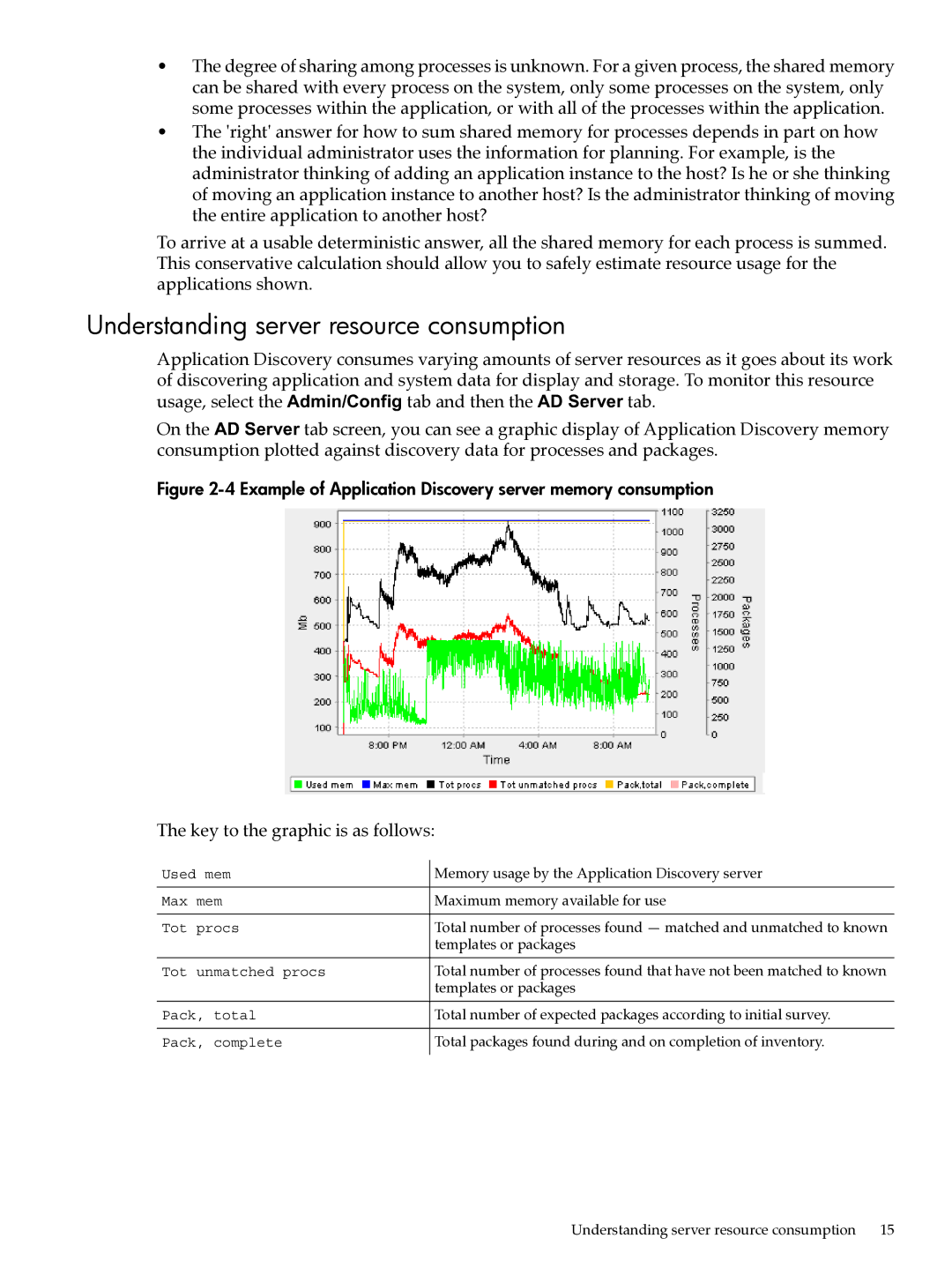
•The degree of sharing among processes is unknown. For a given process, the shared memory can be shared with every process on the system, only some processes on the system, only some processes within the application, or with all of the processes within the application.
•The 'right' answer for how to sum shared memory for processes depends in part on how the individual administrator uses the information for planning. For example, is the administrator thinking of adding an application instance to the host? Is he or she thinking of moving an application instance to another host? Is the administrator thinking of moving the entire application to another host?
To arrive at a usable deterministic answer, all the shared memory for each process is summed. This conservative calculation should allow you to safely estimate resource usage for the applications shown.
Understanding server resource consumption
Application Discovery consumes varying amounts of server resources as it goes about its work of discovering application and system data for display and storage. To monitor this resource usage, select the Admin/Config tab and then the AD Server tab.
On the AD Server tab screen, you can see a graphic display of Application Discovery memory consumption plotted against discovery data for processes and packages.
Figure 2-4 Example of Application Discovery server memory consumption
The key to the graphic is as follows:
Used mem | Memory usage by the Application Discovery server |
Max mem | Maximum memory available for use |
Tot procs | Total number of processes found — matched and unmatched to known |
| templates or packages |
Tot unmatched procs | Total number of processes found that have not been matched to known |
| templates or packages |
Pack, total | Total number of expected packages according to initial survey. |
Pack, complete | Total packages found during and on completion of inventory. |
Understanding server resource consumption | 15 |
